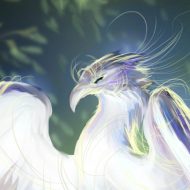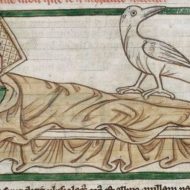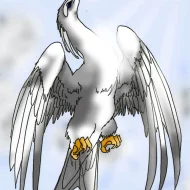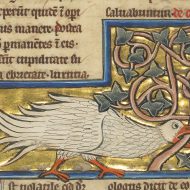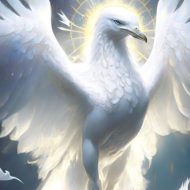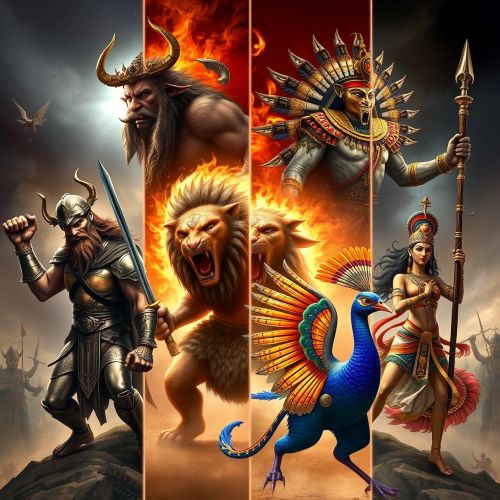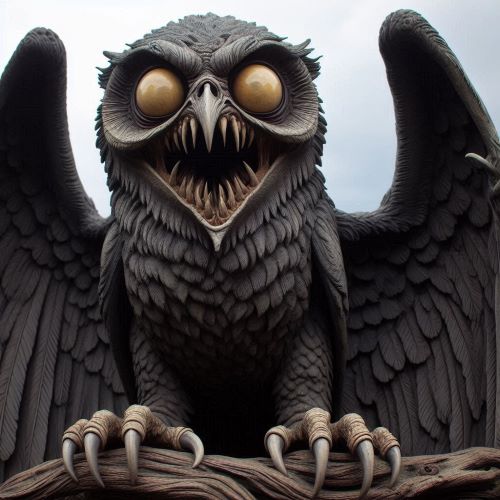Caladrius : The Healing Bird
Listen
At a glance
| Description | |
|---|---|
| Origin | Roman Mythology |
| Classification | Animals |
| Family Members | N/A |
| Region | Italy |
| Associated With | Healing, Medicine |
Caladrius
Introduction
According to Roman mythology, the caladrius is a snowy bird that resides in the king’ s house. It’s believed that it can take a sickness and send it away, allowing it to heal both the afflicted person and itself. This legend, which formed a part of bestiary materials during the medieval era, provided a Christian perspective to animals.
Physical Traits
The caladrius is a white bird that usually lives in a king’s house. It is usually depicted as a snowy bird that stands on or near a sick person lying on a bed. In some cases, the bird is shown looking directly at the person while in others, it is looking away. The other people who are near the bed sometimes react with either sad or happy expressions depending on how the bird is looking.
Family
It has been suggested that the caladrius is inspired by a real bird, such as a dove or a heron. According to art historian Louis Réau, the caladrius most likely is a white plover.
Other names
The Caladrius is also know by the following names in various parts of the ancient Roman empire. They are also known as Cacadrius, Caladre, Caladrio, Calandre, Calandrello, Calandrini, Calandrius, Caradrio, Caradrione, Caradrius, Carido, Charadrius, Kaladre, Kalandre
Powers and Abilities
Roman mythology has featured the caladrius as a snowy bird with a healing power. It was also said to have a prophecy. It was believed that the bird would visit a sick person in the king’s house, draw their sickness away with its healing powers, and leave them with the illness once it has departed. The bird was able to absorb sickness from its surroundings by looking at them. Not only did the caladrius heal, but it was also said to be able predict the outcome of a person’s illness. By the time the legend reached the bestiary materials of the medieval era, it had become widely known as a tool for predicting death.
The caladrius was considered to be a powerful healer, as it can take a sickness and send it away, allowing the afflicted individual to get better. It was also believed that the caladrius’ waste products could heal blindness. This was a Christian interpretation of the legend, though it is not known how this was tested. Caladrius was believed to represent Christ. Its white plumage symbolized purity, while its lack of black highlighted its lack of sin.
Modern Day Influence
In Saturday Night Live’s “Theodoric Of York, The Medieval Barber,” Steve Martin plays the title character, who uses a calardrius to diagnose a person. The bird, which was most likely a pigeon or dove, was presented with a lot of humor due to how difficult it was to use live animals on television.
The caladrius was featured as a healer and a flying scout in Age of Mythology. It looked almost like an angel. In 1975, a song about the caladrius appeared on the album Cantafabule by Transsylvania Phoenix.
Interested in how legendary creatures still inspire today’s stories? Browse art and apparel for modern fantasy fans at Spellbound Shelf.
Related Images
Frequently Asked Questions
What does the caladrius symbolize?
In Roman and Medieval mythology, the Caladrius is a bird that has healing powers. It is also pure white, and it can remove illness from a person’s body. Some of its basic symbolic meanings include truthfulness, purity, vision, and salvation. In Christian theology, it represents Jesus Christ as a white person without sin’s blackness.
What kind of bird is caladrius?
Caladrius is an imaginary bird that appears in Medieval and Roman bestiaries and mythology. It is depicted as a snowy white bird with healing powers, and it has been theorized that it was based on a real heron or dove. Louis Réau, an art historian, believed that the bird was a white plover.
What is the origin of the caladrius?
The Caladrius is a mythical bird that appears in Roman mythology and Medieval bestiaries1. It has been theorized that the Caladrius may have been based on a real bird, such as a dove or a heron, due to its description of being completely white with no black on it2. The art historian Louis Réau believed it was most likely a white plover2. Before the Caladrius became an allegory for Christ in the bestiary, it cropped up in several ancient texts as a real-life bird
What is the significance of a white plover in mythology?
The Caladrius is a bird from Roman mythology who is believed to be a white plower.

